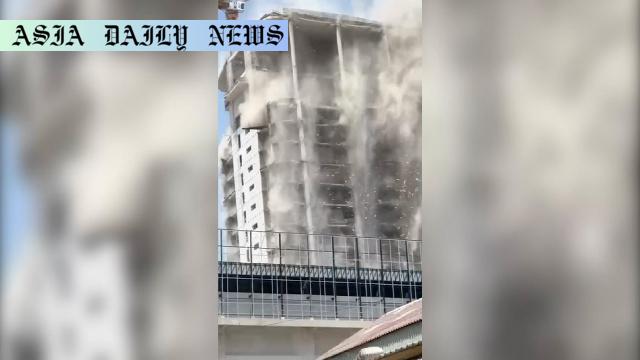Collapse: Inspectors blame design flaws for deadly Bangkok building failure during March earthquake.
- Key Point 1: Design flaws and substandard concrete contributed to Bangkok building collapse.
- Key Point 2: Over 90 lives were lost in the incident during a massive earthquake.
- Key Point 3: Findings will be used for legal proceedings against responsible parties.
- Key Point 4: Joint Thai-Chinese venture identified as responsible for negligence.

Design and Structural Flaws Blamed for Major Tragedy
In a tragic incident that shook Bangkok earlier this year, a 30-storey high-rise building collapsed during a massive earthquake on March 28. Inspectors in Thailand recently concluded their investigation, and the findings pointed squarely at severe design and construction shortcomings. Over 90 individuals lost their lives in this disaster, making it one of the deadliest building collapses in the country’s history. The high-rise, which was the only building in Bangkok to crumble in the Myanmar-centered earthquake, became a grim symbol of negligence and oversight in urban construction practices.
According to the detailed report, two critical structural components—the elevator shaft and stairwell walls—were found to be improperly designed and built, failing to withstand the seismic forces. Furthermore, the use of substandard concrete exacerbated the situation, rendering the building especially vulnerable to natural disasters. These revelations have sparked outrage among experts and citizens, as such lapses could have been prevented with stricter adherence to construction codes and quality standards.
Legal Actions and Accountability
Authorities are taking serious measures to ensure justice for the victims and their families. The Thai government has handed over the investigation’s findings to law enforcement agencies, and multiple executives from the joint venture responsible for the project have already been charged with negligence. The guilty parties include a major Thai builder and a subsidiary of a Chinese state-owned company, both of which allegedly compromised on safety to cut costs.
This incident has shone a spotlight on the regulatory deficiencies in Thailand’s construction sector and raised questions about the oversight of joint ventures involving international stakeholders. Experts are urging the government to implement tougher regulations and mandatory seismic-resistant designs for new buildings as part of their response to the tragedy. Meanwhile, the legal proceedings are expected to shape future accountability in the construction industry across Asia.
Lessons for Urban Planning and Construction Standards
The collapse of the Bangkok high-rise serves as a stark reminder of the importance of prioritizing safety in urban development. As cities across the world continue to expand vertically, the need for robust building codes and rigorous compliance checks cannot be overstated. Authorities must also invest in educating engineers, architects, and construction personnel about modern seismic-resistant technologies and practices.
The disaster is also a wake-up call for the global community to address challenges in joint-venture projects, particularly those involving multi-national collaborations. Transparency, accountability, and adherence to international standards should become non-negotiable aspects of such initiatives. Moving forward, this tragic event can serve as a catalyst for change—not only in Bangkok but also in other regions prone to seismic activities.



Commentary
The Dangerous Cost of Cutting Corners in Construction
The tragic collapse of the Bangkok high-rise during an earthquake is a somber reminder of the devastating consequences of negligence in construction design and material quality. It is heartbreaking not only because of the loss of over 90 innocent lives but also due to the fact that these deaths could have been avoided with better planning and accountability. This tragedy demands deep introspection from Thai authorities as well as the broader construction industry.
The Call for Sweeping Regulatory Overhauls
One glaring issue highlighted by this disaster is the inadequacy of Thailand’s construction oversight mechanisms. It is evident that improper regulations or their lack of enforcement allowed substandard materials and flawed design to pass undetected. Stricter laws mandating seismic-resistant structures, as well as regular audits of construction projects, need to be made a priority. Additionally, the harsh accountability of responsible parties, including multinational stakeholders, should set a precedent to deter future infringements.
Global Lessons for the Urban Future
This incident is not an isolated one—similar challenges exist in rapidly urbanizing countries around the world. Cities are racing against time to accommodate growing populations, often prioritizing vertical growth to meet demand. However, safety and structural resilience cannot take a backseat in this race. If anything, this tragedy underscores the moral and professional duty of developers and regulators to protect human lives above all else. By prioritizing safety and stringent compliance, disasters like this can, and should, be entirely avoided.